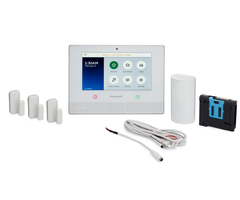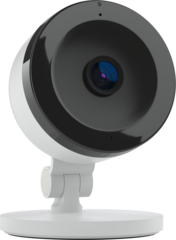Why a DIY Home Security System is Perfect for New Users in 2019
Posted By Michael GorisFor the past several years, the security industry has experienced a major shift in favor of DIY users. While alarm systems once required professional installation and programming, that is no longer the case today. The DIY route is now the optimal option for nearly any new alarm system user.

In order to understand this concept, it's first good to look at how security systems have changed. Old alarm systems were not user friendly. These were hardwired panels that featured intricate and complex programming options. This was not stuff that a user could figure out on their own. On top of that, sensors has to be wired directly to the panel, and wires had to be run throughout the building. Again, the average user was not able to complete these tasks on their own. This made professional installers a necessity. This was fine at the time, and many companies established thriving businesses around this model.
However, the security industry has been gradually evolving to favor DIY users. Wireless all-in-one panels began featuring touchscreen controls that made it possible for everyday users to perform their own programming. Sensors became wireless so that complex wire runs were no longer needed. The rise of IP and cellular communication allowed users to establish effective and reliable communication paths for their systems with minimal assistance. Smart home automation exploded in popularity, and many users got on board for these features alone. Today in 2019, alarm systems have truly become easier to use and more accessible than ever.
At Alarm Grid, we want you to understand that you can perform your own security system installation. You don't have to be a professional. You don't have to understand electrical theory or wiring. You don't have to be tech savvy. The key is to choose equipment that makes the process as easy as possible. Yes, there are still hardwired systems available that are truly best-suited for professional installations. Those systems are still very popular in their own right, and they are perfect for certain situations. But that doesn't mean they are right for the average home user. If you're a DIY user, a wireless system is almost always the way to go.
There are a few things you should get to accompany a wireless security system. The most obvious is wireless sensors. These are the devices that report to the panel when an event occurs inside the home. What's great about wireless sensors is that they can typically be mounted using a double-sided adhesive that comes often included. There's no need to drill any holes, and they only tool you will need is a screwdriver to install the batteries. You might also want a Honeywell LT-Cable to wire the panel to its plug-in power supply. This wire comes pre-prepared, and a screwdriver can complete the connection. Finally, a table or desk stand can prevent you from having to mount the panel to a wall.
A control panel. Wireless sensors. A desk stand. A screwdriver set. That's really all you need to get started. We have seen users achieve complete installations with those items alone. You don't need to pay for an installer. You can do this yourself. And if you're new to alarms, then what better way to get acquainted than installing your own system? If you're starting from scratch, you may as well design your own security system and build it the way you want it. This is truly the age of the DIYer, and we're here to help you.
The best way for a new user to get started is to reach out to Alarm Grid. Our security system planning team can help make sure that you get all the equipment you need and also that you avoid wasting your money on what you don't need. Then sign-up for an Alarm Grid monitoring plan. We provide top-quality alarm monitoring services, and we are partnered with one of the best alarm monitoring centers in the world. Plus, we offer free online and phone support and assistance for all of our monitored customers. So if you ever need any extra help installing or configuring your own system, our team will be ready to assist.
If you're new to home security, then a DIY installation is right for you. We know that taking the first step can be a little scary, but our team is here to help! The alarm systems of today are easy to work with, and they are perfect for new users. We encourage you to contact us through email at support@alarmgrid.com. You can also call us at (888) 818-7728 during our normal business hours of 9am to 8pm EST M-F. We look forward to working with you and helping you design the perfect security system for your home.











 Streaming video directly to the panel from Alarm.com is a feature available for both the standard
Streaming video directly to the panel from Alarm.com is a feature available for both the standard 













